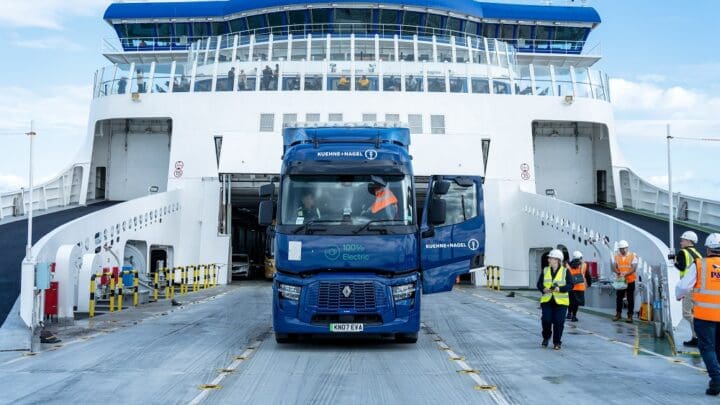
The heavy-duty electric truck crossed the Channel on P&O Ferries’ newest hybrid vessel, P&O Liberté, which produces 40% fewer carbon emissions than conventional ferries on the same route.
Its double-ended design, SmartShip technology, and optimised schedule and speed all contribute to greater operational efficiency and the overall reduction of emissions for Kuehne+Nagel’s freight trip.
This event demonstrates the operational viability of electric trucks on international routes and showcases their potential for decarbonising freight transport.
The crossing also proves that ferry transport, unlike tunnels such as the Gotthard Tunnel in Switzerland—where regulatory restrictions sometimes apply due to safety concerns with lithium-ion batteries—offers a legally feasible and safe alternative for electric heavy goods vehicles (HGVs) between the UK and mainland Europe.
Until now, no heavy-duty electric truck with freight had completed this ferry route.
The delay reflects the current scarcity of such vehicles and the practical limitations of battery range, which can pose logistical challenges for long-haul freight operations. By proving the feasibility of this journey, the collaboration aims to boost confidence in electric truck technology, inspire broader adoption, and accelerate the shift to sustainable transport fleets. The Dover–Calais route is a critical artery for UK-European trade, and this achievement highlights its potential as a green freight corridor for the future.